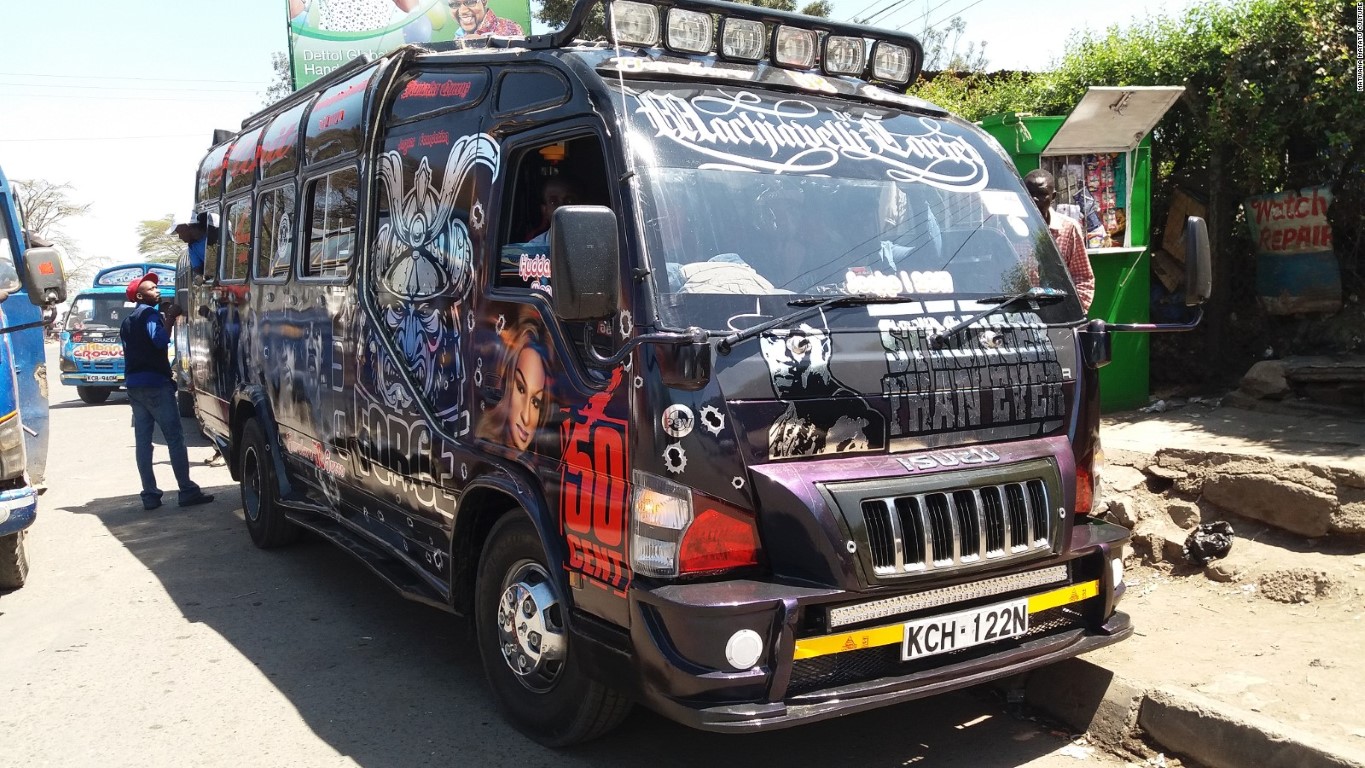A Kenyan matatu. Courtesy: Kenyan Wall Street
Kenya’s matatu culture; a million-profit innovation hub revolutionizing the transport industry
They are loud, sleek and command total attention on the streets of Nairobi. On a given day, these vehicles ferry millions of city residents to work and other businesses, making them the dominant and most preferred mode of transport. Locally known as Matatus, these mini buses have evolved from being mere buses to display areas for creativity, art and culture worth millions of shillings.
The origin of the graffiti and extras on matatus earnestly began around five years ago. Before then, matatus had just plain lines of different colors making it very hard for commuters to differentiate the vehicles. Today, this frenzy has grown to become a revolution that has swept across the country. “No one can ply a matatu on the Kenyan roads without graffiti on the vehicles,” says Mohammed Khartar the founder of popular graphics company Mohagraffix who was one of the pioneers of this change at the turn of the new millennium.
The Matatu industry in Kenya can be described as art on wheels, coming from plainly designed vehicles to enhanced machines: in terms of spray painting, body fabrication and hi-tech entertainment systems.
“The demand is quite high unlike before, so we have gone a notch higher and are now doing the modern manyanga bodies.” James Kimani, the Managing Director of DODI Autotech, a bus assembly company, says. A manyanga body, is a specific type of bus that has two compartments, separated by a tv screen fitted block – the drivers and the rest for passengers.
These specific bodies are the ones that are liked by the youth hence the high demand. The National Safety and Transportation Board says that the youth demographic make up the largest percentage of commuters on public transport, estimated at around 75 percent. James adds that to meet the growing demand for innovation, they have had to widen imports of new materials every time, with some purchased locally but most from abroad. Major foreign markets include Japan, China, Germany, US and South Korea.
According to veteran artist Khartar, it has been a tale of constant growth, as Kenyans continue to adapt to new styles and innovations. “We used to do one color like white or grey, and all this used to be boring. We would do the white color and then it goes. People would only use the cars, they would get old and still they would continue using them like that.”
The trend in the industry is driven by young commuters, who desire entertainment and color as they steer through the city traffic.Duncan Masava, is the director of Ongataline Sacco, a bus company that plies more than two hundred buses within the capital. He says, “We have people who love movies, sports, music, like the ones I mostly own are called Arafat Kanye, it’s for fans of Kanye (West) music. We have some for footballers, others for rugby fans; we have everything in store.”
Today’s matatus are also fitted with many “extras” such as WIFI, large Video screens, aquariums, working air conditioning and some with IPADs. “Most of my fans are the youth because our vehicles have WIFI internet inside. Most of the youth like it. When they overstay in the jam and the vehicle has internet inside, they can’t get bored. They can start googling for free,” adds Duncan Masava. The matatu culture is loud, fast and vibrant, hundreds of thousands of these cars have sprung up in the country creating competition amongst owners, with some having spent up to 15 million Kenya shillings or 150,000 US Dollars, on remodeling these cars, just to attract their customers.
In spite of the high capital-intensive investments, owners of the Matatus report an increase in business turnover. Transport Industry experts estimate that every month each vehicle brings around roughly 500,000 to 800,000 Kenya shillings (8000US Dollars) in the capital Nairobi. Even as the growing youth population continues to shape the public transport in the country, one of the economic benefits of this culture has been formation of enterprises, which are creating thousands of jobs. The businesses have also risen to become an invaluable employment opportunity for street urchins, most of whom depended on exploits gained from criminal activities for a living before getting a job at the companies.
“I do matatu bodies and in this business I have had to employ many youths. They have been able to get jobs, and as we keep doing bodies all the time, we keep employing more and more,” James Kimani explains. Data from the Kenya National Bureau of Standards indicates that about 15 percent of Kenyans living in urban areas are employed in the transport sector, a whopping majority being young people, under the age of 35 years. Most of the workers in car garages are young, many having little or no University education, despite their wealth of craft and skill.

